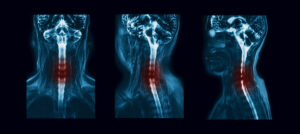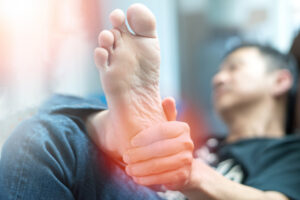The curve of our spine is essential for several reasons. It supports the head, helps maintain the structure, allows us to bend and move, and helps absorb shock. However, some people have a curve that arches too far or inwards, causing pain, pressure, and discomfort. This article discusses cervical lordosis, its Symptoms – Causes – Diagnosis – Treatment factors.
What is Cervical Lordosis?

Lordosis is referred to an inward curve of the spine that is more than normal. It usually occurs in the lower back; however, it is called cervical lordosis if it occurs in the neck. If the spine curves outwards, causing a hump, it is known as kyphosis. Kyphosis affects the upper or middle back.
The most common type of lordosis occurs in the lower back. You can check for this by lying on a flat surface and sliding your hand under your lower back. There shouldn’t be a lot of spare space between the surface and your lower back. If there is, it’s recommended to see your physician.
Cervical lordosis occurs when the spine in your neck doesn’t curve as it should. There could be a prominent curve; the curve may have shifted to the right or left or may be running in the wrong direction. All these cases are a cause of concern and shouldn’t be ignored.
What are the Symptoms of Lordosis?

An inward curve of the spine is the main symptom of cervical lordosis. In some cases, it can cause the stomach or buttocks to stick out depending on its location. As the curve of the spine affects the back, cervical lordosis patients can have difficulty lying flat on the floor.
It can also change how a person looks without any visible symptoms of the condition. In severe cases, it may cause
•Excruciating pain in the back or neck
•Pain extending to the legs and feet, also known as sciatica
•Numbness or a tingling sensation
•Weakness or electric shock pains
•Difficulty in exercising muscle control
•Week bladder control
An abnormal curve in the spine commonly causes muscle pain as they get pulled in varying directions. This can cause your muscle to spasm or tighten. Pain due to cervical lordosis affects the upper back, shoulders, and neck and should not be ignored. Having this can also lead to difficulty moving your neck or lower back.
How is Cervical Lordosis Diagnosed?
To determine if you have a neck spine curve, you must make an appointment with your doctor if you’re experiencing above mentioned symptoms. He will perform a physical examination and take your medical history to rule out the cause of your neck pain.
When you visit your physician, they will check your range of motion, any abnormalities, alignment of your spine, and whether the curve is flexible or not.
Suppose your health practitioner finds that you are exhibiting symptoms of cervical lordosis. In that case, they may request a spine x-ray, CT scan, or MRI to determine the angle and possible cervical lordosis treatment options.
Common Causes of Cervical Lordosis
There isn’t a single factor that determines the cause of Cervical Lordosis. It can develop at any age and may be aggravated by certain other conditions. Some of the common causes of cervical lordosis are as follows:
•An injury to the spine such as a fracture, also known as traumatic lordosis, may cause cervical lordosis
•Loss of bone density caused by osteoporosis can lead to the weakening of the bones, thus leading to the development of lordosis
•An incorrect posture or being overweight can increase the risk of developing the condition. The weakening abdominal muscles cause a strain in the lower back
•Any surgery of the back that has unstabilized the spine increases the risk factor
•A neuromuscular condition such as cerebral palsy can lead to lordosis
Treatment of Cervical Lordosis
Cervical lordosis treatment is not required in most cases. If the curve is mild with no pain or visible symptoms, there may be no need for treatment. However, if the condition is severe, surgery may be necessary.
Its treatment largely depends on the cause of the condition. If it results from obesity or muscle weakness, a person may have to seek weight management and physical therapy. To reduce the severity of pain, medication may be taken.
If a child or a teen has developed lordosis, back braces may be recommended to reduce the curve from developing further as the child grows. Nutritional supplements such as vitamin D may also help in strengthening of lordosis.
Risk of Cervical Lordosis
Maintaining a healthy spine is essential as it’s the backbone of many other bodily functions. It allows us to move, bend and stretch freely. However, It does not cause significant health problems for many people, but ignoring pain and not treating the condition can lead to long-term pain and discomfort. It can lead to problems affecting internal organs, hip girdle, spine, or legs.
How to Prevent Cervical Lordosis
There are no guidelines per se to prevent cervical lordosis. Some daily exercises and stretches may help maintain spine health and a good posture. You can perform exercises such as neck side tilts, leg raises, pelvic tilts, shoulder shrugs, and yoga poses like the bridge or cat pose to keep your spine healthy.
Conclusion
In conclusion, any pain that you experience relating to the neck or lower back should not be ignored. If the curve is flexible, meaning it corrects itself upon bending forward, seeking treatment is unnecessary.
However, if the curve is not flexible, meaning it does not correct when you bend over, treatment should be sought without delay. Any pain that causes interference in day-to-day activities should not be ignored.
Your spine health is essential for flexibility and mobility. Treating cervical lordosis timely can prevent complications in later life.

